- Home
- Philip Pullman
Daemon Voices Page 22
Daemon Voices Read online
Page 22
The next picture (see next page) is by Rembrandt and it shows the moment when King Belshazzar sees the writing on the wall foretelling that he will be killed and his great city sacked and ruined.
Here the little story of ours, our fundamental particle, plays a different part in the drama. In his alarm at seeing the mysterious writing appear, the king turns around hastily and knocks over a golden vessel, spilling the wine. Actually there are two inadvertent spillings going on: the woman in the right foreground is also losing the wine in her goblet.
Belshazzar’s Feast by Rembrandt (see also this page)
Unlike the pouring-out in the Charles Addams cartoon, these accidents are not the central action of the picture. They’re part of the scenery here, like the hip flask in the first New Yorker cartoon, but there’s a difference: here they function as metaphors as well as scenery. These are the very vessels of gold and silver that Belshazzar’s father Nebuchadnezzar had taken from the temple at Jerusalem, and their presence in the picture, and the spilling of the wine, can be read as standing for excess, for the loss of control and order and temperance: they foretell the spilling of blood that will happen later that very night.
Now this is the point at which the real power of the pouring-out story begins to become apparent. Because like all the other fundamental particles of this sort, it doesn’t only mean what it seems to mean; it can mean something else as well. Some of the fundamental particles of matter carry an electrical charge. Fundamental particles of story, like this one, can carry a metaphorical charge. We’ll come back to that more fully in a minute.
Another painting (see this page), this time by Goya; and unlike the Rembrandt, where everything is clear and every reference legible (provided we know the Bible story), this is mysterious and obscure. A man who might be a priest is pouring what must be oil into a lamp held by a demonic figure, in a setting that seems to teem with darkness and supernatural threat. He’s got his hand over his mouth as he looks at us, as if to say that he knows he’s taking part in some forbidden ritual, or making some evil bargain, and wants us to keep silent about it. The picture is full of that eerie witchiness, that grim and enigmatic sense of supernatural dread that Goya was so good at evoking. It could be a scene in the progress of a damnation. And once again the pouring-out is not mere scenery here, it’s the subject of the whole picture. This is all about the filling of the lamp from the jug of oil.
The difference between this and the Rembrandt is that although the pouring of the oil into the lamp is rich with significance, we don’t know what it means. It’s enigmatic and paradoxical. Light is proverbially symbolic of good, and filling a lamp symbolic of care and prudence; we think of the wise virgins, who had enough oil for their lamps, and the foolish ones who didn’t, and who missed the wedding feast. Filling a lamp, bringing light, is a good act, and yet here it seems to be haunted by guilt and fear. Is this lamp going to light the way to evil, or to show us things better left unseen? Is that what it means? The metaphorical charge is clearly working, it’s clearly doing something; but what is it?
Our experience of looking at this picture—mine, anyway—is a useful reminder that these days most people must feel similarly puzzled in front of the Rembrandt. People of my generation, in whose background the Bible figured largely, are at home with Belshazzar; we know what’s going on. But for many people Rembrandt’s painting must be as weird and enigmatic as the Goya—until they read the caption on the wall beside it, or in the book under the reproduction. And when we read the caption to this painting, we learn that in fact it illustrates a scene from a comedy, a play by Antonio de Zamora called The Forcibly Bewitched, and it shows the foolish and timorous Don Claudio replenishing the lamp on which he’s been led to believe his life depends. He’s a dupe, he’s a gull. It’s a debatable point whether the explanation diminishes the impact of the picture; for my money, it does. There are some stories that are more rich and powerful unexplained.
A scene from The Forcibly Bewitched by Francisco Goya
Earlier on I mentioned the neutrality, the uninflected tone of the fundamental particle itself, which enables it to lend itself to any emotional purpose. We’ve seen it being funny, we’ve seen it being dramatic, and here it’s different again; when we see the whole of this picture, we can tell that the atmosphere is clearly solemn and reverent. I wonder what the intelligent but uninformed spectator would make of Piero della Francesca’s The Baptism of Christ (right). Whatever is happening here, no one could mistake the fact that it is of profound importance; our fundamental particle here is about as central as any pictorial element could be in a picture, and because of the surrounding activity, the air of ritual and the calm and dignified purpose of all the participants, the pouring-out here carries a charge of great gravity. Whatever the man is doing as he pours out the water, it isn’t a trivial business.
The Baptism of Christ by Piero della Francesca (see also this page)
As a matter of fact, here we see the fundamental particle acting in a way we haven’t seen before. Early Christians, and Eastern Orthodox Christians still, believe that only total immersion counts as valid baptism: “If the person to be baptised is so ill that immersion would endanger his life, then it is sufficient to pour water over his forehead; but otherwise immersion must not be omitted,” says Timothy Ware in his book The Orthodox Church. The Western churches—or most of them—are content to let the pouring-out, the fundamental particle, act metonymically, so to speak, to be one part standing for the whole. And here the meaning of the picture resides not just in what it depicts, but in what that signifies.
So we need to know what things signify, but we can have too much explanation. Next in this little picture gallery is an engraving from George Wither’s A Collection of Emblemes, from 1635 (see facing page).
Embleme for the Month of May by George Wither
The vogue for emblem-books was a century old by that time, but the appetite for these little pictorial-poetical devices was undiminished. Typically each page shows a picture whose symbolism is then explained at exhaustive length in the accompanying verse. As with the Goya, I sometimes think they’re better unexplained: what’s sometimes the infinitely suggestive mystery of the pictures is sometimes reduced to the bleeding obvious by the verse. But at least here it does show us another use for our fundamental particle. The idea is that there are some things it’s better to do gradually—poco a poco—than to rush at:
When, thou shalt visit, in the Month of May,
A costly Garden, in her best array;
And, view the well-grown Trees, the wel-trimm’d Bowers,
The Beds of Herbs, the knots of pleasant flowers,
With all the deckings, and the fine devices,
Perteyning to those earthly Paradises,
Thou canst not well suppose, one day, or two,
Did finish all, which had been, there to doe…
And so on, and so on.
Well, if you had nothing better to do in 1635 I suppose you could spend an improving hour or so pondering the truth of that, and then advise your friends about it sententiously for weeks. Everybody seemed to have so much more time in those days.
At almost exactly the same date, the French painter Laurent de La Hyre was commissioned to decorate a room with personifications of the Seven Liberal Arts. This one (see page 209) is Grammar.
The view of Grammar depicted here is not the one currently held by the British Department for Education, which is that grammar is a set of facts about which children must be drilled and tested so that their school can be ranked in order in a league table. This is a more humane proposition, which happens to be expressed in terms of the metaphor of watering something to make it grow: “Like young plants, young brains need watering, and it is the duty of Grammar to undertake this.” So said Cesare Ripa’s Iconologia, the source book for countless allegorical paintings an
d poems.
When I was training to be a teacher, we were told that in the old days children used to be thought of as empty vessels and it was the teacher’s job to fill them with knowledge. “But of course we don’t think that any more,” we were told very firmly. I can’t remember what metaphor they brought in to replace it. I’m pretty certain it wasn’t this one—watering plants—but I like this. There’s life in it.
So our little narrative particle has moved from the realm of the literal, where there is a physical container with something physical in it, water or bootleg hooch, and you pour it out, and there it is, in a story or a picture—into another realm, which is the metaphorical. We project that idea on to activities that are not in any way concerned with literal pots and literal jugs, literal water or literal wine.
But there’s no hard-and-fast division between one kind of picture, or story, and another. We’ve seen that some of the literal pouring-out can be read metaphorically as well, and as the great scholar of symbols and iconography Ernst Gombrich says, “Our language favours this twilight region between the literal and the metaphorical. Who can always tell where the one begins and the other ends?”
This fluidity, this twilight region, is the medium through which these fundamental particles lend themselves to metaphor. To take the pouring-out one, consider these expressions, some of which we scarcely recognise as metaphors:
Pouring oil on troubled waters
Pour cold water on something
She’s poured money into the venture
A drop in the ocean
The accountant poured scorn on the idea
She poured her heart out
He’s feeling absolutely drained
Her cup is running over
Allegory of Grammar by Laurent de La Hyre
And then there’s this idea: The Spring, La Source (see this page).
And this is the point at which the full reach of this particular fundamental particle is revealed, in the metaphor of the source, the spring, the fountain, fons et origo. Two other ideas arrive at once: a nursing mother, her breasts full of milk, and the image of Christ’s blood: “This is my blood of the New Testament, which is shed for you and for many for the remission of sins; do this, as oft as ye shall drink it, in remembrance of me.” The essence of the source, the spring, is something good coming out of something else—liquid that is useful, fertilising, refreshing, nourishing, life-giving.
Because it would be of no value, it would have no meaning, if it were poured out where it was not needed. It comes as a gift, something not paid for, something given freely, from a fullness to an emptiness—from an ever-replenished abundance to a scarcity—life to the lifeless, drink to the thirsty, water to the parched earth.
La Source by Jean Auguste Dominique Ingres
How often the image of dryness stands for emotional or spiritual death. T. S. Eliot is full of it:
thoughts of a dry brain in a dry season;
and
where the sun beats,
And the dead tree gives no shelter, the cricket no relief,
And the dry stone no sound of water…
And one place where we see this pouring-out of refreshing, life-giving blessedness in action is the situation of the artist, the painter, composer, poet, novelist, in need of, and seeking, and sometimes gaining, the favour of the Muse. Work without inspiration is possible, of course. The only way to become a professional artist of any sort is to learn how to work efficiently when you’re not feeling inspired in the least.
But there are periods of dryness, of deadness, of despair, which are not like the usual drudgery. Then we need something more. We need the waters of the spring struck by the hoof of Pegasus from the flanks of Mount Helicon. That wasn’t the only spring that did the trick, of course; there were several. There was the spring Aganippe, also on Mount Helicon, that brought inspiration to those who drank from it. There was the Pierian spring on the slopes of Mount Olympus that did the same: “A little learning is a dangerous thing,” said Pope; “Drink deep, or taste not the Pierian spring.” There was the Castalian spring on Mount Parnassus, sacred to Apollo.
Now as a principle of life I’m perfectly happy to be both sceptical and credulous simultaneously, and here I’m credulous. The business of inspiration is a subject I’m a little superstitious about. Perhaps it’s dangerous to talk about it; perhaps the spring will dry up if you make it too public. But I know people are curious about the process of composition, because the question I and other writers get asked more than any other is: “Where do you get your ideas from?” Another question from the same centre of feeling is “How can I become inspired?”
And like many other writers, because I don’t know the answer to these questions I tend to be unhelpful or evasive about my answers. “Where do you get your ideas from?” they ask, and I say, “I don’t know where they come from, but I know where they come to: they come to my desk, and if I’m not there, they go away again.” Which may not be helpful, but it is true. The capacity to sit and be bored and frustrated for very long stretches of time is essential, but nowhere near as glamorous as the inspiration idea, and people don’t like to hear about that so much.
Let me try and describe briefly what it’s like to feel inspired in the way that I think people mean when they talk about inspiration. I actually talk about it very rarely, and I don’t think I’ve ever had a conversation with another writer on the subject. But this is what it feels like to me. It feels like discovery, not invention. It feels as if the story I’m writing already exists, in some Platonic way, and that I’m privileged from time to time to gain access to it. The curtain twitches aside for a while; the moon comes out from behind a cloud, and illuminates a landscape that was previously invisible; something like that.
Something happens, and there’s a moment or so of clarity in which I see all kinds of possibilities and connections and patterns and correspondences that I never suspected were there in the great clumsy bundle of darkness and confusion that is the story I’m trying to write. I see the way out of a narrative cul-de-sac. I see what I must do in order to bring these two people together. I see a way of resolving the problem of the ending at the same time as making use of one of those loose ends. I see a perfection of form that makes it worth continuing to struggle with the intractable material I have to shape it out of.
It doesn’t last very long, this feeling of inspiration, or whatever we want to call it, but it doesn’t really have to; all you need to do is see the possibilities, and that cheers you up, and you go back to work with a will.
And it does—I don’t want to get all spiritual about this—but it does feel like a blessing, precisely like the sense you get when you’re walking in a mountainous bit of country on a hot day and your bottle is empty, and you come across a spring of fresh water. A little poem from the Greek Anthology by Leonidas of Tarentum perfectly expresses this sense of refreshment, gratitude, blessedness:
Traveller, don’t drink here; the water’s warm
And muddy from the torrent. Climb the hill
There where the heifers graze, go on a step or two,
And by the shepherds’ pine you’ll find a spring,
A fountain bubbling through the generous rock,
Its waters colder than the northern snow.
I have to tell the truth about what I feel, and that is the truth about it. That’s what it feels like. And as I say, it’s always accompanied by a sense that there’s more where that came from—that somewhere there’s an inexhaustible source of strength, truth, meaning, encouragement, blessedness. It feels like being blessed. Something has come from somewhere else to refresh and strengthen me. And it’s not given parsimoniously; I’m not offered just a drop or two, and told that’s all I can have because they’re running short, and o
ther people need it too, and I have to make it last, and I can’t expect any more in this financial year. There’s never that implication; there’s always enough. And that feeling itself is a great source of hope and strength. A source, you see: the image enters the language. There’s the fundamental particle again, almost too hard to see, except when we look.
The image of inspiration as a spring, and its connection with storytelling, is vividly present in Samuel Taylor Coleridge’s two great poems “The Rime of the Ancient Mariner” and “Kubla Khan.” “Kubla Khan” is structured around the image of a river, the sacred river Alph, which runs “Through caverns measureless to man / Down to a sunless sea.”
In the central section of the poem Coleridge describes the “deep romantic chasm” which is “a savage place! As holy and enchanted / As e’er beneath a waning moon was haunted / By woman wailing for her demon-lover.” Now the woman wailing for her demon lover appears just once, and out of nowhere, and is never more than a figure for comparison. She’s not a character in the poem—she’s the sort of person you might see in a place like that, so that’s the sort of place it was. There is an old Scots ballad called “The Demon Lover,” which Coleridge must have known (he was well read in the Scots ballads), though in that, the situation between the woman and her demon lover is quite different from the one in “Kubla Khan.” But the woman here, who is the sort of person you might well see in a deep romantic chasm, is a figure from a story (something must have led her to this; something will follow in consequence) even if it’s a story we don’t know. And it’s right in this story-haunted place that the river bursts out of the earth:

 The Golden Compass
The Golden Compass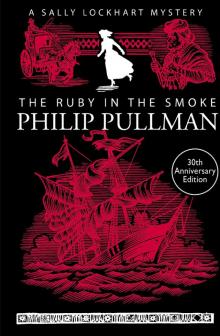 The Ruby in the Smoke
The Ruby in the Smoke I Was a Rat!
I Was a Rat!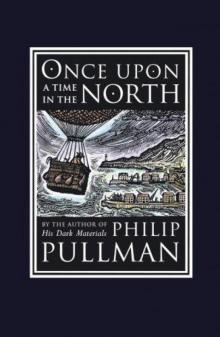 Once Upon a Time in the North
Once Upon a Time in the North The Tiger in the Well
The Tiger in the Well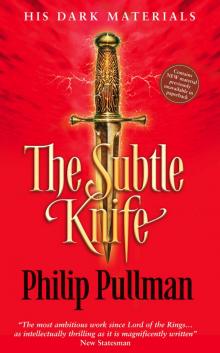 The Subtle Knife
The Subtle Knife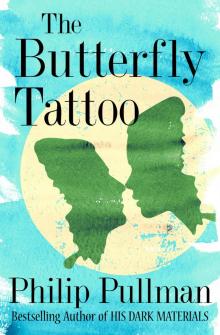 The Butterfly Tattoo
The Butterfly Tattoo Lyra's Oxford
Lyra's Oxford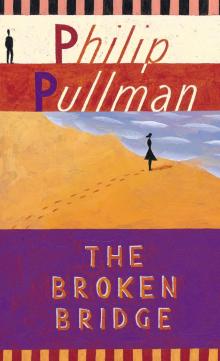 The Broken Bridge
The Broken Bridge The Amber Spyglass
The Amber Spyglass Count Karlstein
Count Karlstein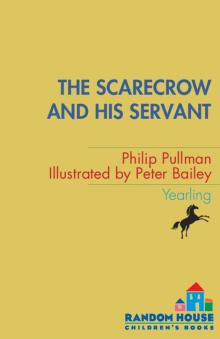 The Scarecrow and His Servant
The Scarecrow and His Servant The Shadow in the North
The Shadow in the North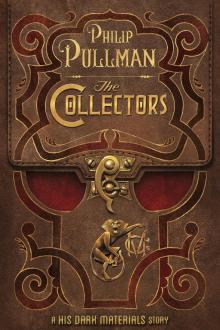 The Collectors
The Collectors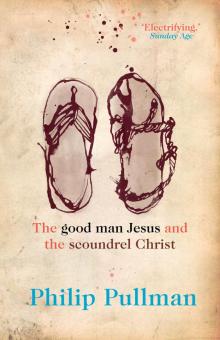 The Good Man Jesus and the Scoundrel Christ
The Good Man Jesus and the Scoundrel Christ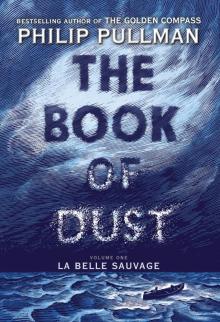 La Belle Sauvage
La Belle Sauvage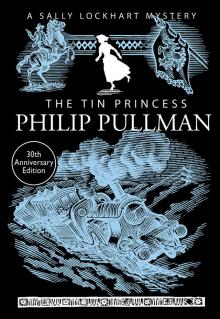 The Tin Princess
The Tin Princess The Firework-Maker's Daughter
The Firework-Maker's Daughter The Book of Dust: The Secret Commonwealth (Book of Dust, Volume 2)
The Book of Dust: The Secret Commonwealth (Book of Dust, Volume 2)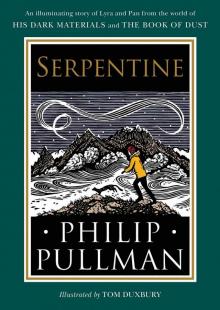 Serpentine
Serpentine Daemon Voices
Daemon Voices The Amber Spyglass: His Dark Materials
The Amber Spyglass: His Dark Materials The Amber Spyglass hdm-3
The Amber Spyglass hdm-3 The Haunted Storm
The Haunted Storm The Golden Key
The Golden Key His Dark Materials 01 - The Golden Compass
His Dark Materials 01 - The Golden Compass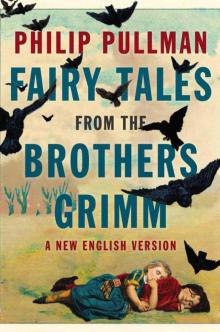 Fairy Tales from the Brothers Grimm: A New English Version
Fairy Tales from the Brothers Grimm: A New English Version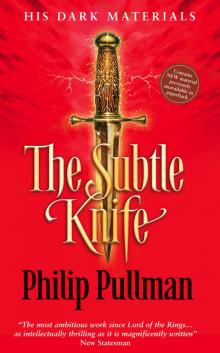 His Dark Materials 02 - The Subtle Knife
His Dark Materials 02 - The Subtle Knife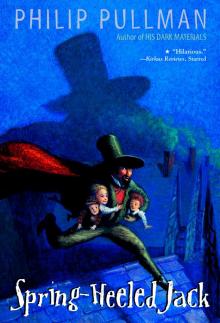 Spring-Heeled Jack
Spring-Heeled Jack The Golden Compass hdm-1
The Golden Compass hdm-1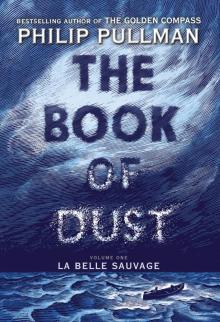 The Book of Dust, Volume 1
The Book of Dust, Volume 1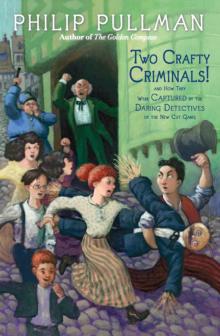 Two Crafty Criminals!
Two Crafty Criminals!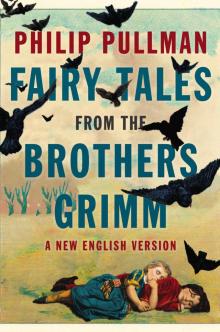 Fairy Tales from the Brothers Grimm
Fairy Tales from the Brothers Grimm The Subtle Knife: His Dark Materials
The Subtle Knife: His Dark Materials His Dark Materials Omnibus
His Dark Materials Omnibus The Golden Compass: His Dark Materials
The Golden Compass: His Dark Materials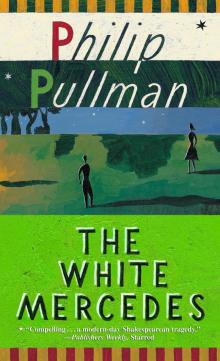 The White Mercedes
The White Mercedes